I'm having an issue seeding my database with users and roles.
The User and the Role are both created (I can see them in the database after the error is thrown).
However, when I try to check if the user is in a role, I get an exception.
My code is:
public class tbInitializer<T> : DropCreateDatabaseAlways<tbContext>
{
protected override void Seed(tbContext context)
{
ApplicationDbContext userscontext = new ApplicationDbContext();
var userStore = new UserStore<ApplicationUser>(userscontext);
var userManager = new UserManager<ApplicationUser>(userStore);
var roleStore = new RoleStore<IdentityRole>(userscontext);
var roleManager = new RoleManager<IdentityRole>(roleStore);
if(!userscontext.Users.Any(x=> x.UserName=="marktest"))
{
var user = new ApplicationUser { UserName = "marktest", Email = "marktest@gmail.com" };
userManager.Create(user, "Pa$$W0rD!");
}
if (!roleManager.RoleExists("Admin"))
{
roleManager.Create(new IdentityRole("Admin"));
}
if(!userManager.IsInRole("marktest","Admin"))
{
userManager.AddToRole("marktest","Admin");
}
However, on the line:
if(!userManager.IsInRole("marktest","Admin"))
An exception is thrown with the error: UserId not found.
The User and the Role are both in the database when I check after the exception is thrown:


Can anyone see what I'm doing wrong?
Thanks for any help,
Mark